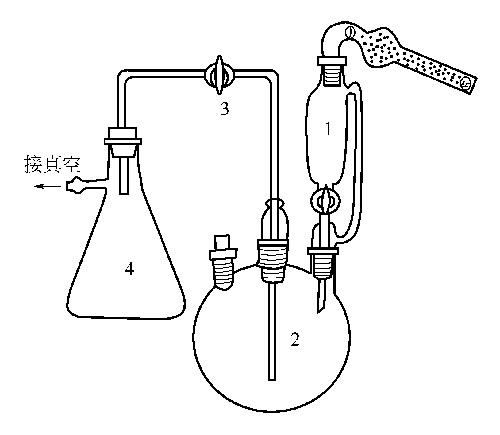Section 1: Product Identification
Chemical Name: Silicon (IV) acetate, min. 95%
CAS Registry Number: 562-90-3
Formula: Si(OOCCH3)4
EINECS Number: 209-239-7
Chemical Family: metal acetate salt
Synonym: Silicon tetraacetate
Section 2: Composition and Information on Ingredients
Ingredient CAS Number Percent ACGIH (TWA) OSHA (PEL)
Title Compound 562-90-3 100% no data no data
Section 3: Hazards Identification
Corrosive to skin, eyes, and mucous membranes. May cause coughing, wheezing, shortness of breath,
Emergency Overview:
headache, nausea and vomiting. Ingestion may cause damage to the mouth, throat and esophagus.
Primary Routes of Exposure: Ingestion, inhalation, skin, eyes.
Eye Contact: Corrosive to eyes.
Skin Contact: Corrosive to skin.
Inhalation: Inhalation may cause inflammation of the respiratory tract, edema and chemical pneumonitis.
Ingestion: Ingestion may cause damage to the mouth, throat and esophagus.
Corrosive to skin, eyes and mucous membranes. Inhalation causes coughing, wheezing, shortness of breath,
Acute Health Affects:
headache, nausea, and vomiting. Ingestion may cause damage to the mouth throat and esophagus.
Chronic Health Affects: Prolonged inhalation of inorganic silicon compounds may cause pulmonary fibrosis know as silicosis.
NTP: No
IARC: No
OSHA: No
SECTION 4: First Aid Measures
Immediately flush the eyes with copious amounts of water for at least 10-15 minutes. A victim may need
Eye Exposure:
assistance in keeping their eye lids open. Get immediate medical attention.
Wash the affected area with water. Remove contaminated clothes if necessary. Seek medical assistance if
Skin Exposure:
irritation persists.
Remove the victim to fresh air. Closely monitor the victim for signs of respiratory problems, such as difficulty
Inhalation:
in breathing, coughing, wheezing, or pain. In such cases seek immediate medical assistance.
Seek medical attention immediately. Keep the victim calm. Give the victim water (only if conscious). Induce
Ingestion:
vomiting only if directed by medical personnel.
SECTION 5: Fire Fighting Measures
Flash Point: not applicable
Autoignition Temperature: no data
Explosion Limits: no data
Extinguishing Medium: carbon dioxide or dry powder
Fire fighters should be equipped with a NIOSH approved positive pressure self-contained breathing apparatus
Special Fire Fighting Procedures:
and full protective clothing.
Hazardous Combustion and If involved in a fire, this material may emit toxic and corrosive fumes.
Decomposion Products:
Unusual Fire or Explosion Hazards: No unusual fire or explosion hazards.
SECTION 6: Accidental Release Measures
Spill and Leak Procedures: Sweep up the solid and dispose of properly.
SECTION 7: Handling and Storage
Handling and Storage: Store the material in a sealed container. Store cold. Keep away from heat.
SECTION 8: Exposure Controls and Personal Protection
Eye Protection: Always wear approved safety glasses when handling a chemical substance in the laboratory.
Skin Protection: Wear protective clothing and gloves. Consult with glove manufacturer to determine the proper type of glove.
Ventilation: To minimize exposure, handle the material in an efficient fume hood.
If ventilation is not available a respirator should be worn. The use of respirators requires a Respirator
Respirator:
Protection Program to be in compliance with 29 CFR 1910.134.
Ventilation: To minimize exposure, handle the material in an efficient fume hood.
Additional Protection: No additional protection required.
SECTION 9: Physical and Chemical Properties
Color and Form: white xtl.
Molecular Weight: 264.27
Melting Point: 160° dec.
Boiling Point: 148°C /6mm(110°subl.)
Vapor Pressure: no data
Specific Gravity: no data
Odor: not determined
Solubility in Water: reacts with water
SECTION 10: Stability and Reactivity
Stability: moisture sensitive (store cold)
Hazardous Polymerization: no hazardous polymerization
Conditions to Avoid: contact with moisture
Incompatibility: oxidizing agents, water, strong bases, and halogens
Decomposition Products: carbon monoxide, carbon dioxide, silicon dioxide and organic fumes.
SECTION 11: Toxicological Information
RTECS Data: No information available in the RTECS files.
Carcinogenic Effects: No data available
Mutagenic Effects: No data available
Tetratogenic Effects: No data available
SECTION 12: Ecological Information
Ecological Information: No information available
SECTION 13: Disposal Considerations
Disposal: Dispose of according to federal, state, and local regulations.
SECTION 14: Transportation
Shipping Name (CFR): Corrosive Solids, N.O.S.
Hazard Class (CFR): 8
Additional Hazard Class (CFR): NA
Packaging Group (CFR): III
UN ID Number (CFR): UN# 1759
Shipping Name (IATA): Corrosive Solid, N.O.S.
Hazard Class (IATA): 8
Additional Hazard Class (IATA): NA
Packaging Group (IATA): III
UN ID Number (IATA): UN# 1759
SECTION 15: Regulatory Information
TSCA: Listed in the TSCA inventory.
SARA (Title 313): Title compound not listed.
Second Ingredient: none
SECTION 16 - ADDITIONAL INFORMATION
N/A
 基本信息
展开↓
基本信息
展开↓  生产制备方法及用途展开↓
生产制备方法及用途展开↓
 物化性质展开↓
物化性质展开↓  安全信息展开↓
安全信息展开↓  合成路线查看所有的合成路线
合成路线查看所有的合成路线 毒理性展开↓
毒理性展开↓  MSDS 展开↓
MSDS 展开↓ 海关数据查看详细
海关数据查看详细 分子结构与计算化学数据展开↓
分子结构与计算化学数据展开↓